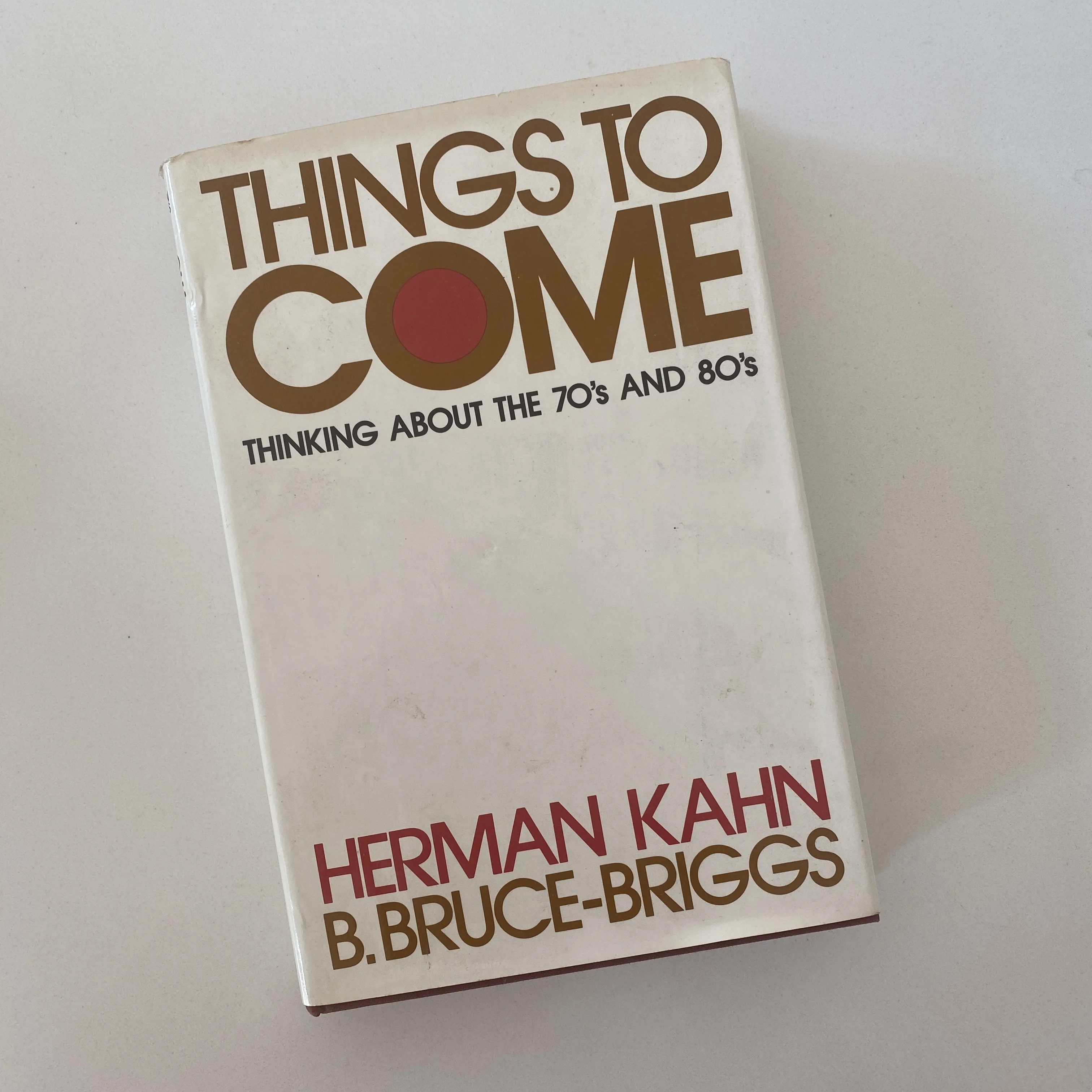
In the last decade, studying the long-range future has become both a serious intellectual pursuit and a very pervasive fad. Studies of the future are being conducted in the United States, Japan, and parts of Europe. Some of these future studies can be distinguished from earlier works by their use of a sustained, cooperative, and relatively systematic approach; others by being part of some semi-religious, semi-political cult. Still others are basically faddish journalism-sometimes good, sometimes bad-but still journal-ism. And, of course, discussing the future is necessarily an art and not a science in the usual sense, though many disciplines are enlisted in a common, integrated effort of analysis and speculation.
Despite their proliferation, it is unlikely that these efforts will replace the works of writers such as Jules Verne, H. G. Wells, or Aldous Huxley; their visionary fantasies have made deeper impressions and have been more widely accepted than the more systematic and professional attempts of long-range forecasters.
However, from our perspective-that of influencing relatively specific private and public decisions—a properly integrated project is more likely to incorporate relevant insights from a broad range of academic and technical disciplines and has a better chance of identifying the policy issues of the future.
A competent interdisciplinary study will not necessarily arouse the interest and concern of citizens and decision makers, but it should, at least, contain discussions on which subsequent research and debate can build. Hudson Institute, originally founded in 1961 to engage in policy analysis, particularly on American national security issues, has in recent years been more and more engaged in the infant but growing field of future stud-ies, or futurology.® This interest was continually prompted by a
* This is an ugly word, smacking of pseudoscience, but we seem to be stuck with it.
growing recognition that policy planning requires some idea of what the world is going to be like when these policies come to fruition. The acceleration of change is such that decision makers form workable plans and gather choices.
Very little can be known for certain about future changes, but a lot about the present.
Perhaps this is as good a time as any to lay to rest the idea that anyone can predict the future. To the best of our knowledge, no professional futurologists claim infallibility. But, that said, it must be qualified, maintaining that the future can be predicted, much as it is when you buy an airplane ticket on the basis of the airline’s prediction that it will reach San Francisco at 9:00 P.M. or when you bend your finger expecting that the Winchester in your arms will propel a few grams of lead into a fleeing deer. Of course, your plans may go awry, your plane may be diverted or crash, or your rifle may misfire. But in each case you have acted with a pretty good idea of what the future would bring. You also take action on the basis of future events which have a very low probability of happening—you buy double indemnity life insurance and carry a spare tire. Essentially, these are the same sorts of things that are done in studying the future.
It is impossible to delineate the future with absolute certainty or in detail, but a range of likelihood can be established: in 1985 there will still be an Atlantic Ocean; in 1985 there will still be a French state; in 1985 people will still drive automobiles; in 1985 the Communists will still rule Russia. None of the above statements is true in that it can be proved, but certainly all are more true i.e., more probable) than statements like: in 1985 America will be Communist; in 1985 France will be part of the Fourth Reich; in 1985 Americans will enjoy universal promiscuity.
Some future events are improbable, others are almost certain, with a wide range in between. The purpose of this book is to get some idea of the possibilities and probabilities of the future. Even though the future does not yet exist, it can be studied.
* For a detailed theoretical justification of future studies see Bertrand de Jouvenel’s The Art of Conjecture (New York, 1966).
Since the mid-196os, Hudson has been engaged in a continuing study of the future of the United States and of the world. We expect to continue this research at least through the mid-1970s.
Over this decade, we expect to perform a unique study of the future of mankind. Much of this study has been funded by research grants and contracts from various government agencies that are concerned with the future of their particular areas of concern and responsibility; some has been funded by grants from foundations and contracts from private nonprofit and profitmak-ing organizations. Recently, primary support for Hudson’s future study has come from about one hundred American and foreign (mostly multi-national) corporations, with which we are conducting our current study of “The Corporate Environment, 1975-1985.
Things To Come is a working document of our continuing study of the future, reflecting partial and tentative conclusions.
We sometimes joke that nothing is ever really finished at Hud-son: we merely pause from time to time to write up what we have so far. This book can be viewed as such a temporary pause for reflection. The reader may be aware of two previous documents— Herman Kahn and Anthony J. Wiener’s, The Year 2000 ( 1967), and Kahn’s, The Emerging Japanese Superstate ( 1970). Both of these were products of the study. Readers familiar with The Year 2000 will recognize some of the ideas contained here since The Year 2000 represents an earlier document of our ongoing future studies. In many ways this book overlaps and continues the argument of The Year 2000. In fact, we are very pleased that The Year 2000 holds up remarkably well six years after it was written.
As a result, any discussion of the 1970s and 1980s by us will, on the whole, elaborate and develop the discussion of that book rather than contradict it. We hope that this relatively short and introductory work will also serve as a popularizer of many of the ideas discussed at great length in The Year 2000. Also, Things To Come has a somewhat different emphasis. Whereas The Year 2000 is concerned with the long-range prospects of mankind, Things To Come looks toward the 1970s and 198os, or in what we would call the “short-” and “middle-range” prospects of mankind. Some things which we feel are very important in the long run will not have any great impact in the short run. On the other hand, some short-range events may be very striking and vital, but essentially transitory. The Year 2000 also contained an extended theoretical justification of futurology, while this book tries to present examples of futurist methodology in use. If The Year 2000 can be thought of as strategic, Things To Come can be thought of as tactical.
Like Hudson’s previous works, this book has several purposes.
By circulating it through commercial channels, we hope to enlighten the concerned and interested public about the issues of the future. We also hope that by organizing this book around a methodological framework and giving a short introduction to the techniques and assumptions of futurology and policy research,® as well as to the terminology used in the work at Hudson, that people who deal with us directly or indirectly can better understand what we are about and how we are organized. One of the most trying problems of our time is the lack of a shared language among the educated public.
We hope that circulating this volume will help to construct a shared language for serious and intellectual discussions. Historically the educated classes have always had a common frame of reference in which they could conduct public discussions and attempt to further the public interest. For example, the Founding Fathers of the American Republic had read the Bible, Plutarch, Shakespeare, Adam Smith, John Locke, and Edward Gibbon. When they came together at Philadelphia in 1787, they had a common set of references which they could use to express their ideas. Such a common set of references is noticeably lacking today. Even for issues that affect everyone, there is no available shared literature-no storehouse of well-understood concepts, no standard types. For this reason we have developed our own. The use of jargon is obviously less appealing than the use of, for example, references to the great books of history, but few of these are read today. We think our terminology is preferable to the alternatives either endless streams of paper elaborating various aspects of the subject, or the relatively clumsy or diffuse formulations and insights which are evident in much public explication of societal issues today.
Hudson has also found helpful the use of charts, that is, lists, graphs, quotations, and tables concisely providing large amounts of information quickly and succinctly on as many key issues of a given topic as possible. We have prepared thousands of charts, some of which are included here. These charts are normally gathered into “chartpages” (examples of which can be found in Chapters V and VII) or “chartbooks.” Such a chartpage or chartbook can be described as a topical or thematic overview and checklist. We are pleased to see that in the last few years the chartbook format has been adopted by U.S. Government agencies and other institutions.
By 1976, the year of the bicentennial celebration of the American Republic, Hudson hopes to have accomplished an important milestone in our study of the future. In cooperation with other organizations, we hope to have a relatively elaborate in-depth discussion of U.S. issues; perhaps looking back two hundred years to 1776 to discuss how these arose and looking ahead to the year 2000 to conjecture on how they might further develop. Such a review of how far we have come and where we are headed should be most useful and extremely interesting. If the project is really successful, it may put many things in proper perspective and thus change many current attitudes. We hope that this book, if not precisely “The baby figure of the giant mass/Of things to come at large,” at least helps to indicate some of the problems we will be dealing with and the opportunities we will have in the next ten to twenty years.
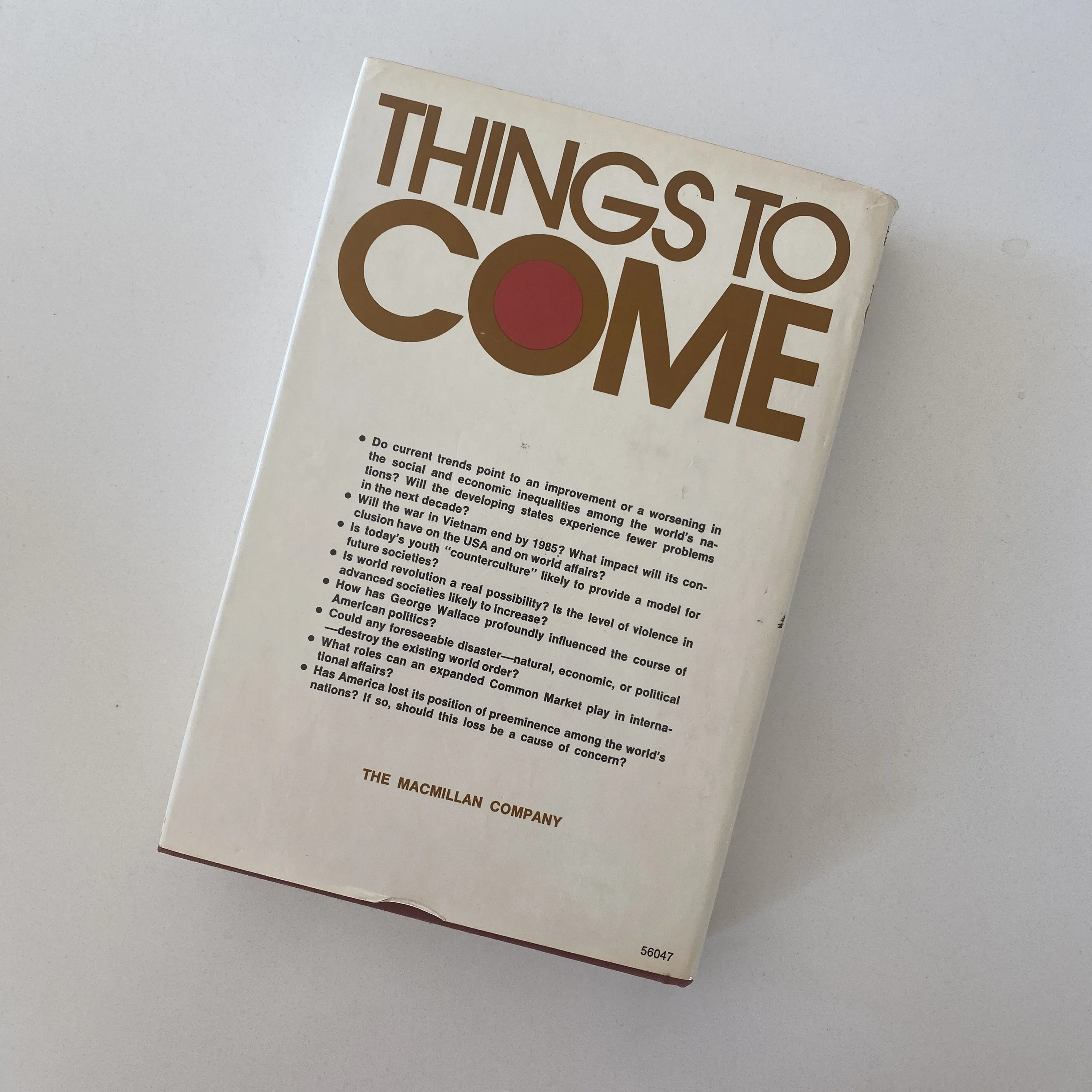


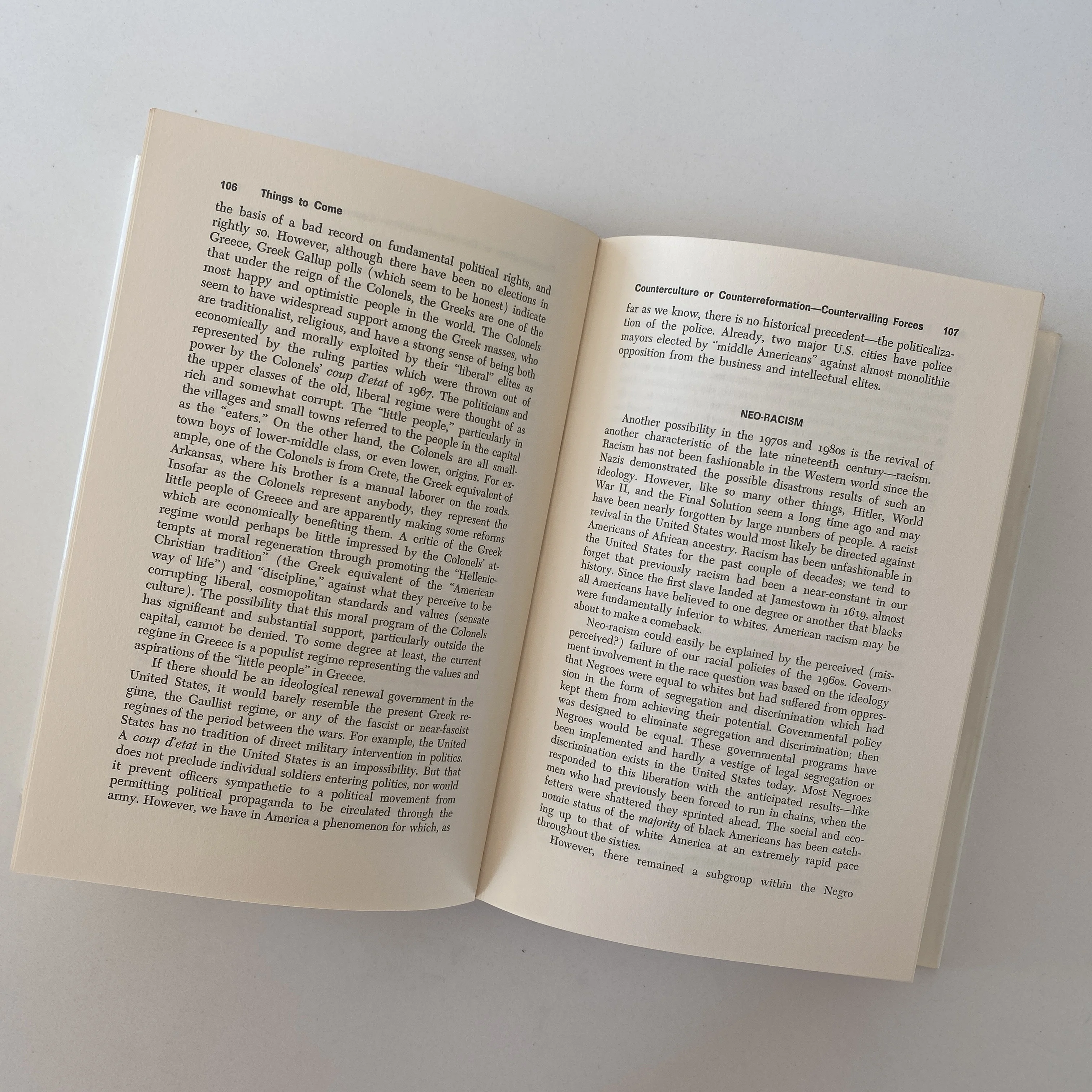
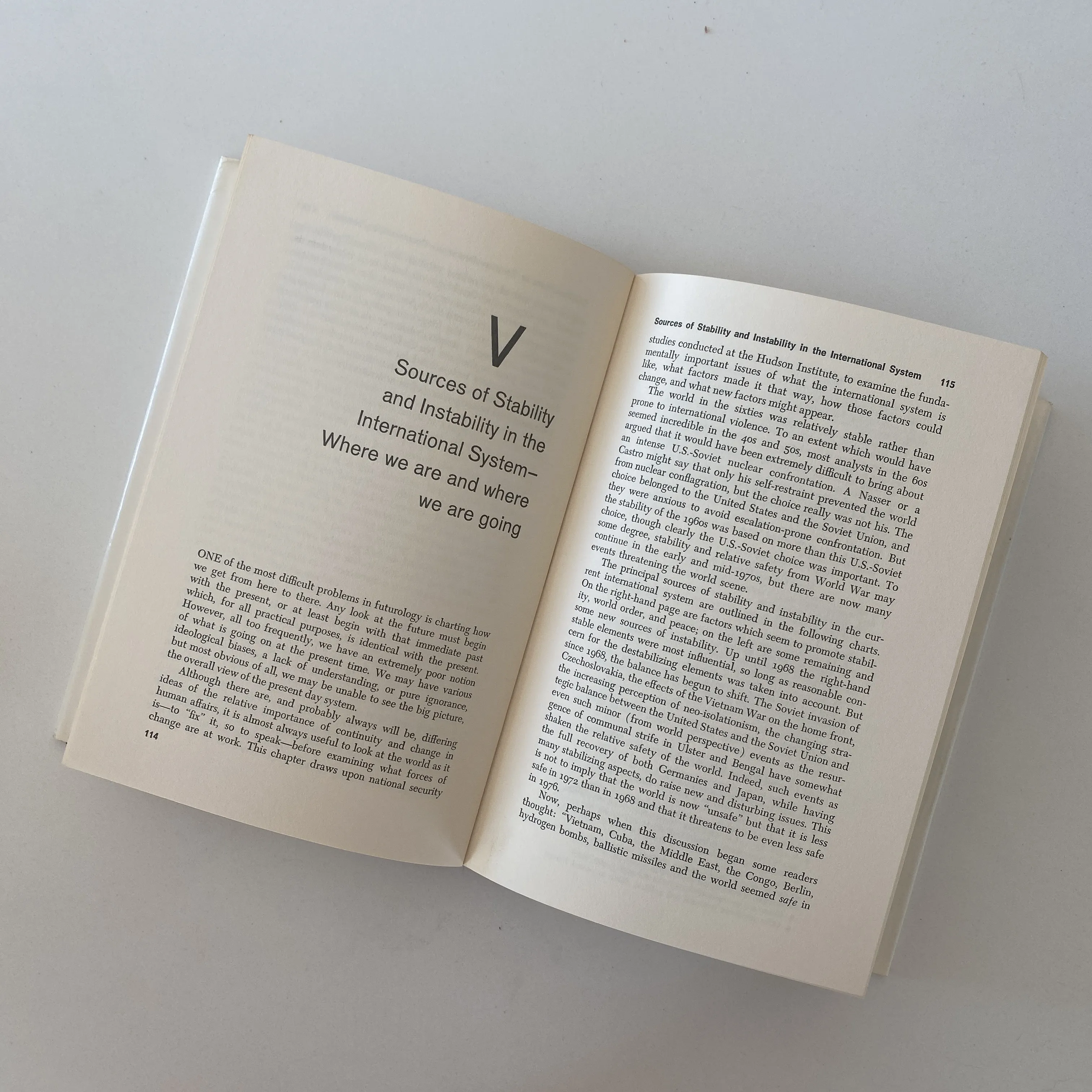
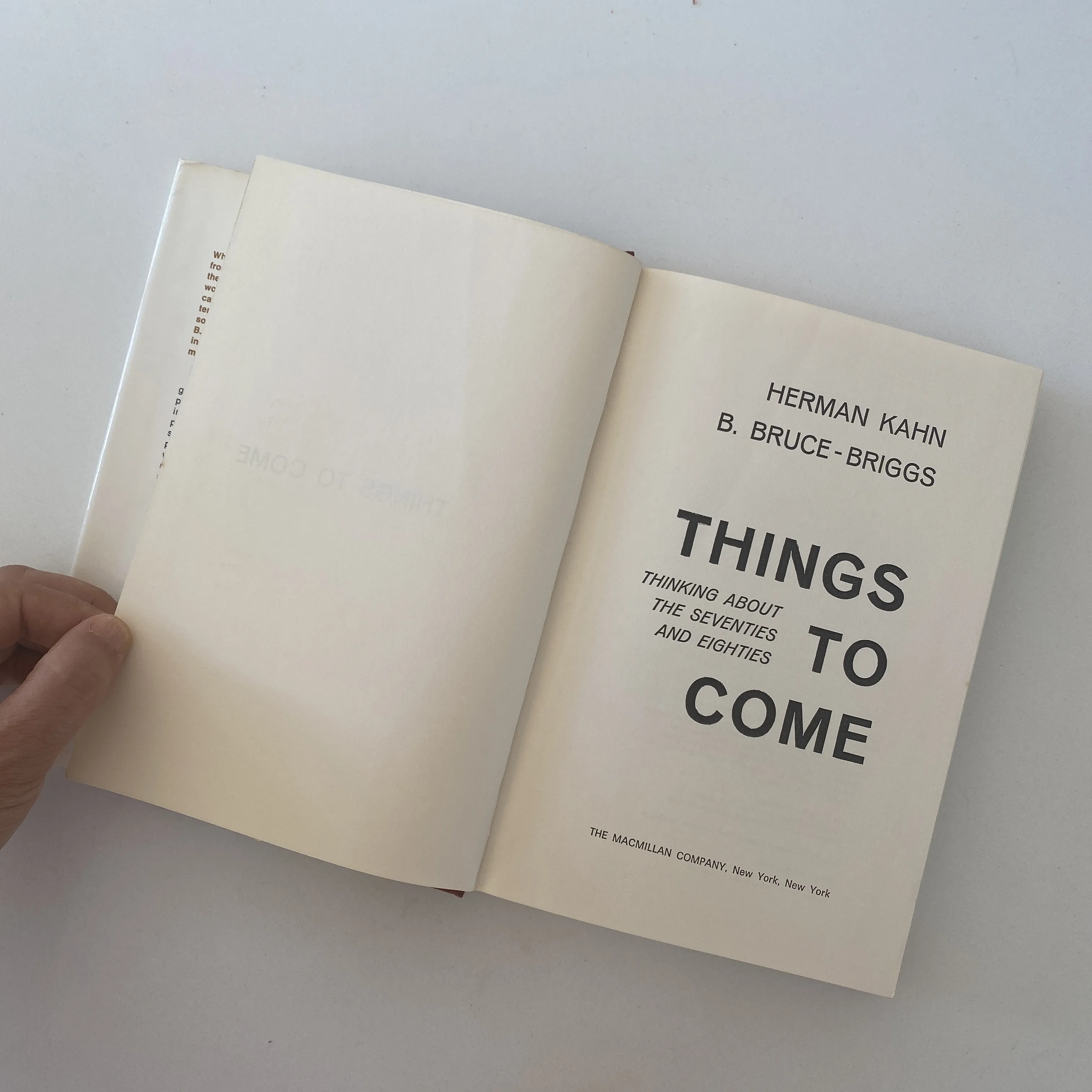

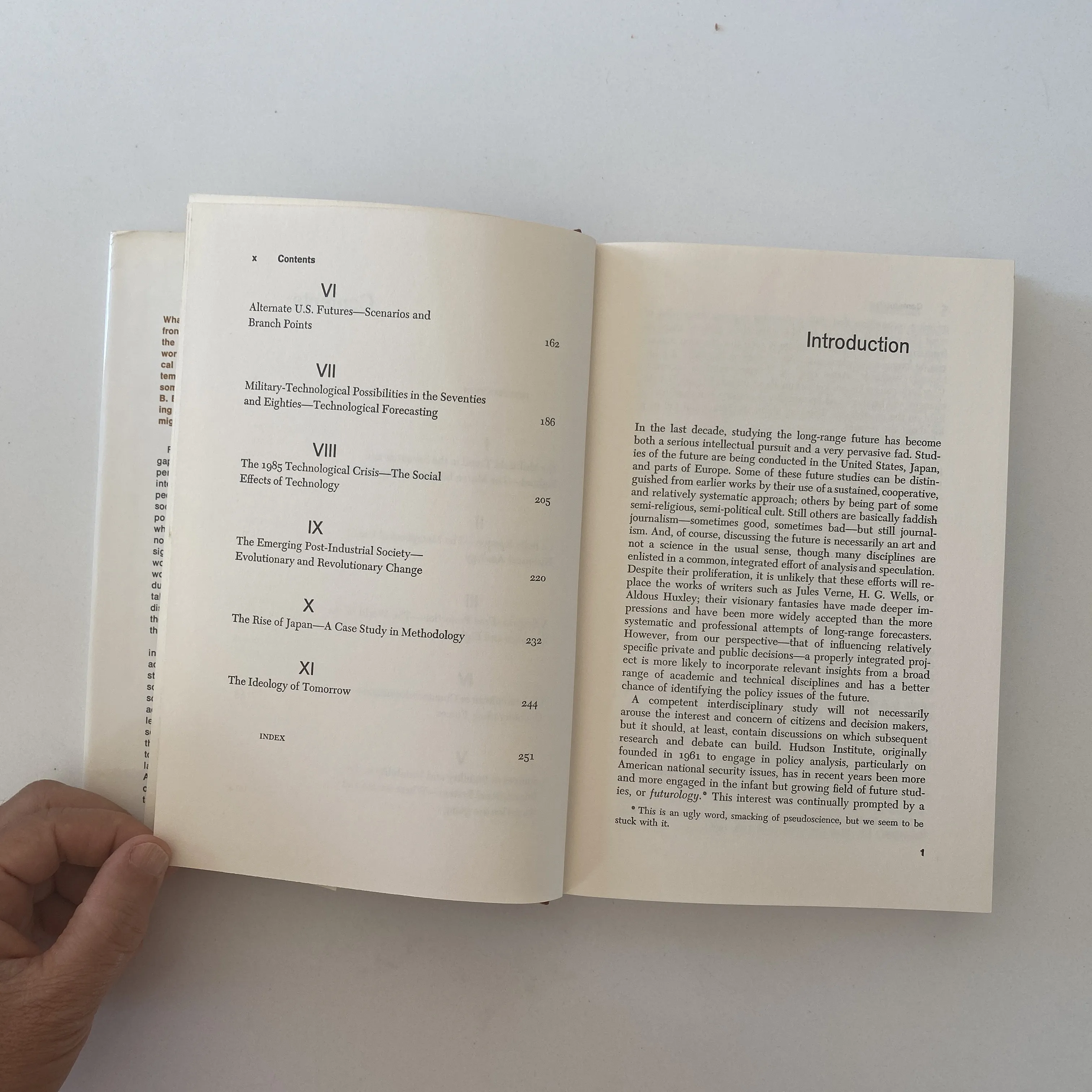
Contributors
Publisher
New York: The MacMillan Company on Amazon on Good ReadsSpecifications
No notes


Use the Contact Form below to discuss how you can engage Near Future Laboratory to help you make sense of your organization's possible futures.